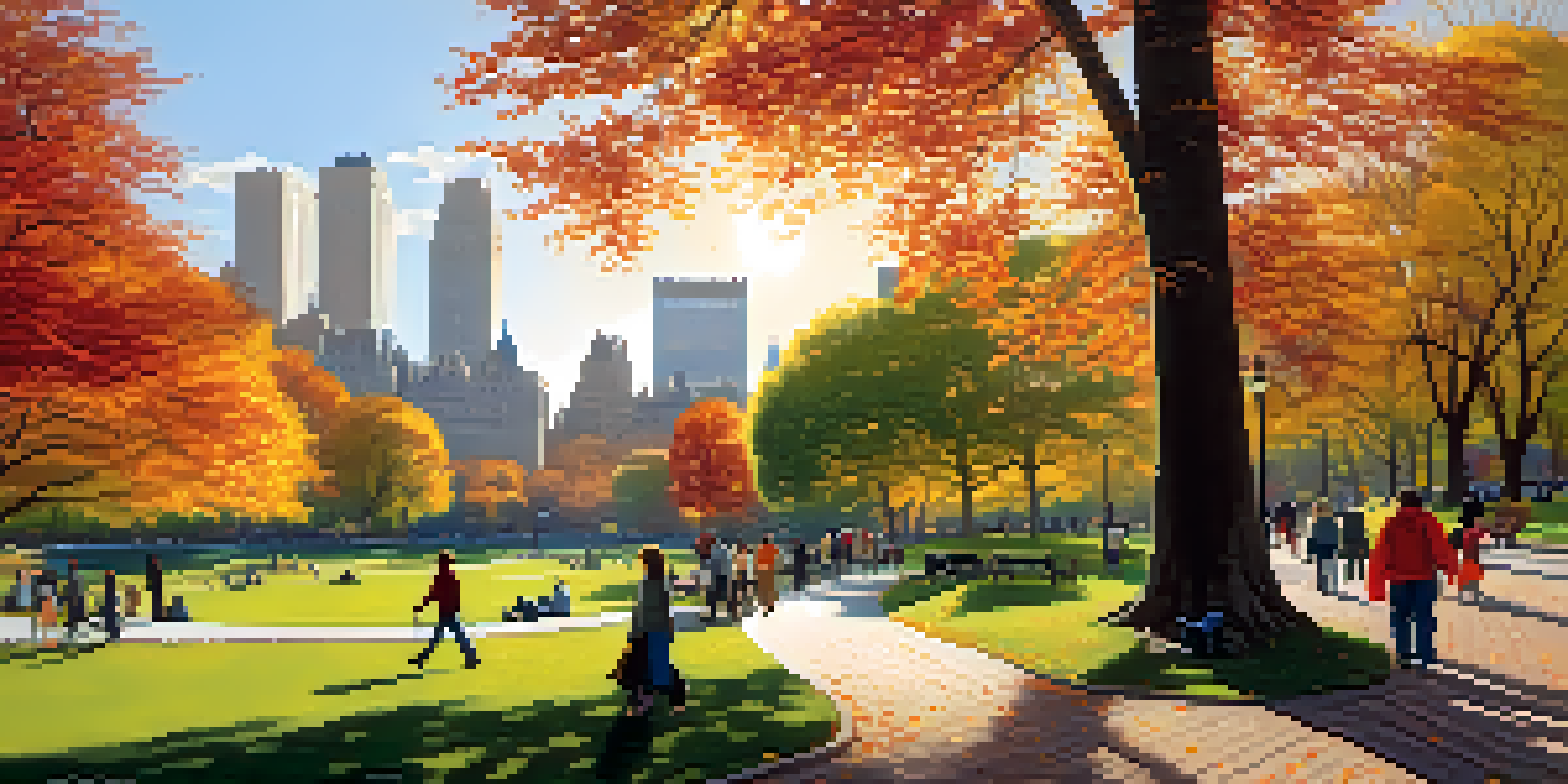The Role of Public Parks in NYC's Urban Infrastructure

Public Parks: The Heartbeat of NYC's Urban Landscape
In the bustling environment of New York City, public parks serve as essential green lungs, providing a natural respite from the concrete jungle. These parks are not just patches of grass; they are vibrant spaces where community life thrives, offering a variety of recreational and social activities. From the iconic Central Park to smaller neighborhood parks, each green space contributes to the city's unique character and livability.
Environmental Benefits of Urban Green Spaces
Public parks play a crucial role in enhancing the urban ecosystem by improving air quality and reducing heat. They absorb carbon dioxide, release oxygen, and help mitigate the urban heat island effect, which can make city summers unbearable. For instance, a well-placed tree can lower surrounding temperatures, providing much-needed shade and comfort for city dwellers.
Parks Enhance Urban Ecosystem
Public parks improve air quality and reduce heat, serving as essential green lungs in NYC.
Parks as Community Gathering Spaces
Beyond their environmental benefits, public parks serve as vital community hubs. They bring together people from different backgrounds, fostering social connections and a sense of belonging. Events like outdoor concerts, farmers' markets, and festivals transform these green spaces into lively venues where friendships blossom and community spirit thrives.
The Health Benefits of Access to Green Spaces
Access to public parks directly influences the physical and mental well-being of NYC residents. Studies show that spending time in nature can reduce stress, lower blood pressure, and even improve mood. With walking paths, sports facilities, and peaceful gardens, parks encourage physical activity and offer a sanctuary for relaxation—essential elements for a balanced urban life.
Community Hubs for Connection
Parks foster social connections and community spirit through events and recreational activities.
Parks and Urban Wildlife Conservation
Parks in NYC aren't just for people; they also serve as crucial habitats for urban wildlife. These green spaces support biodiversity by providing shelter and food for various species, from birds to small mammals. By maintaining these habitats, parks contribute to the overall health of the urban ecosystem, reminding us that nature can thrive even in the heart of a bustling metropolis.
Challenges Facing NYC's Public Parks
Despite their many benefits, NYC's public parks face various challenges, including funding cuts and maintenance issues. Overcrowding can lead to wear and tear, making it difficult for parks to sustain their appeal and utility. Moreover, the need for equitable access means that some neighborhoods still lack sufficient green space, highlighting the ongoing effort to balance resources across the city.
Access to Nature Boosts Well-Being
Access to green spaces promotes physical and mental health, making parks vital for urban living.
Innovative Solutions to Enhance Park Accessibility
To address these challenges, innovative solutions are being implemented to enhance park accessibility and usability. Initiatives like pop-up parks and community engagement projects invite local voices into the planning process, ensuring that parks meet the needs of diverse communities. These efforts not only improve the physical space but also strengthen the bond between residents and their parks.
The Future of Public Parks in NYC
Looking ahead, the role of public parks in NYC's urban infrastructure will only grow in importance. As city planners prioritize sustainability and community well-being, parks will become integral to urban design. By investing in these green spaces, NYC can continue to foster a healthier, happier, and more connected urban community for generations to come.